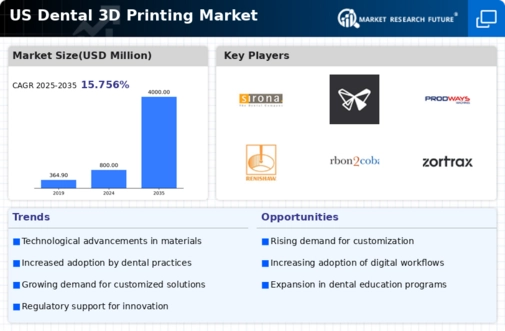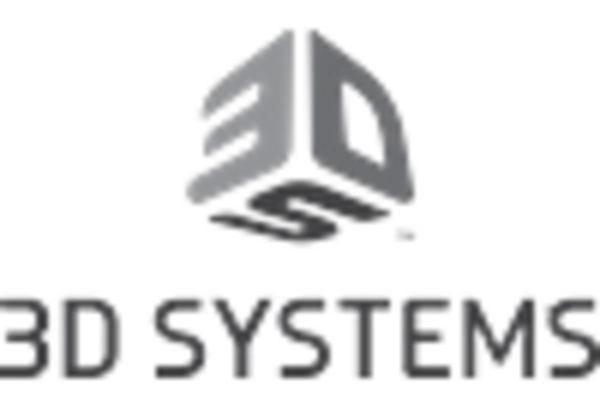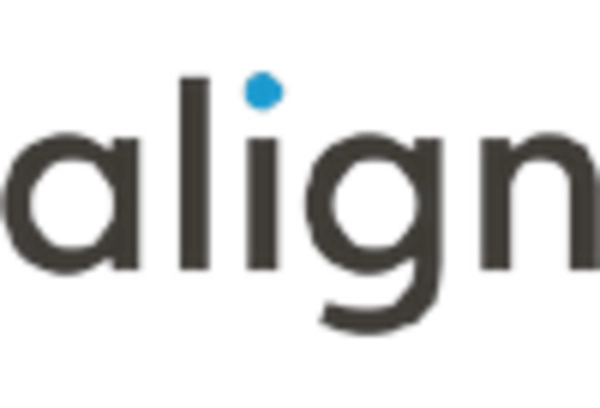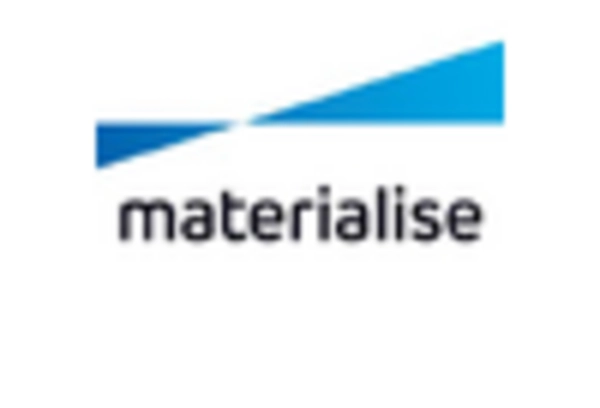Growing Geriatric Population
The increasing geriatric population in the United States is a pivotal driver for the dental 3d-printing market. As individuals age, they often require more dental care, including prosthetics and restorative treatments. The U.S. Census Bureau projects that by 2030, approximately 20% of the population will be aged 65 and older. This demographic shift is likely to elevate the demand for customized dental solutions, as older adults seek comfortable and functional dental devices. Consequently, dental practices are turning to 3D printing technologies to cater to this growing segment, enhancing the overall market potential for dental 3d-printing.
Advancements in Material Science
Advancements in material science are significantly influencing the dental 3d-printing market. The development of new biocompatible materials, such as resins and ceramics, enhances the quality and durability of 3D-printed dental products. These innovations allow for the production of dental devices that not only meet aesthetic demands but also withstand the rigors of daily use. As material options expand, dental professionals are more inclined to adopt 3D printing technologies, recognizing the benefits of improved performance and patient satisfaction. This trend suggests a promising future for the dental 3d-printing market, as enhanced materials continue to drive innovation and adoption.
Integration of Digital Workflows
The integration of digital workflows in dental practices is transforming the landscape of the dental 3d-printing market. Digital impressions and CAD/CAM technologies facilitate seamless communication between dental professionals and laboratories, enhancing the accuracy and speed of dental restorations. This integration reduces turnaround times significantly, with some practices reporting reductions of up to 50%. As digital workflows become standard practice, the demand for 3D-printed dental products is expected to rise. The ability to quickly produce high-quality dental devices aligns with the increasing expectations of both practitioners and patients, thereby driving growth in the dental 3d-printing market.
Cost Efficiency and Waste Reduction
Cost efficiency is a significant driver in the dental 3d-printing market, as practices seek to minimize expenses while maximizing output. Traditional manufacturing methods often involve high material waste and labor costs. In contrast, 3D printing allows for precise production, reducing waste by up to 30%. This efficiency not only lowers operational costs but also enhances profitability for dental practices. Furthermore, the ability to produce dental devices on-demand eliminates the need for large inventories, streamlining operations. As practices increasingly recognize these financial benefits, the adoption of 3D printing technologies is likely to accelerate, further stimulating the dental 3d-printing market.
Rising Demand for Aesthetic Dentistry
The dental 3d-printing market is experiencing a notable surge in demand for aesthetic dentistry solutions. Patients increasingly seek customized dental products, such as crowns, bridges, and aligners, that enhance their smiles. This trend is driven by a growing awareness of dental aesthetics and the desire for personalized treatment options. According to recent data, the aesthetic dentistry segment is projected to grow at a CAGR of approximately 10% over the next five years. As a result, dental practices are investing in 3D printing technologies to meet patient expectations, thereby propelling the dental 3d-printing market forward. the ability to produce tailored dental solutions quickly and efficiently aligns with the evolving preferences of consumers. This makes this driver crucial for market growth.

















Leave a Comment